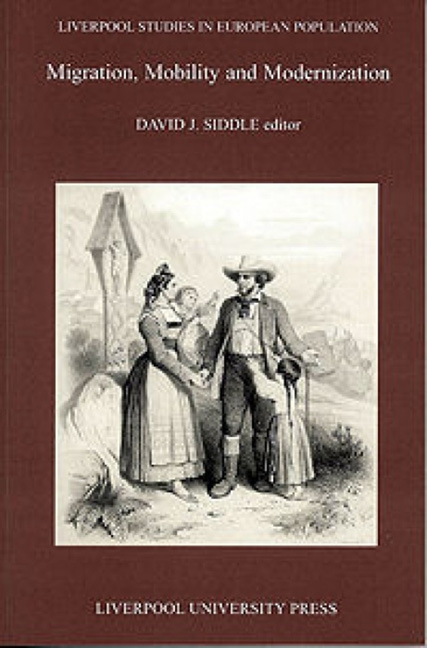Book contents
- Frontmatter
- Contents
- List of Figures
- List of Tables
- 1 Introduction
- 2 Nephews, Dowries, Sons and Mothers: the Geography of Farm and Marital Transactions in Eastern Ireland, c. 1820–c.1970
- 3 Mobility, Kinship and Commerce in the Alps, 1500–1800
- 4 People from the Pits: the Origins of Colliers in Eighteenth-Century South-West Lancashire
- 5 Motives to Move: Reconstructing Individual Migration Histories in early Eighteenth-Century Liverpool
- 6 Urban Population and Female Labour: the Fortunes of Women Workers in Rheims before the Industrial Revolution
- 7 Mobility Among Women in Nineteenth-Century Dublin
- 8 Tramping Artisans in Nineteenth-Century Vienna
- 9 Migration and Urbanization in North-West England: a Reassessment of the Role of Towns in the Migration Process
- Index
6 - Urban Population and Female Labour: the Fortunes of Women Workers in Rheims before the Industrial Revolution
- Frontmatter
- Contents
- List of Figures
- List of Tables
- 1 Introduction
- 2 Nephews, Dowries, Sons and Mothers: the Geography of Farm and Marital Transactions in Eastern Ireland, c. 1820–c.1970
- 3 Mobility, Kinship and Commerce in the Alps, 1500–1800
- 4 People from the Pits: the Origins of Colliers in Eighteenth-Century South-West Lancashire
- 5 Motives to Move: Reconstructing Individual Migration Histories in early Eighteenth-Century Liverpool
- 6 Urban Population and Female Labour: the Fortunes of Women Workers in Rheims before the Industrial Revolution
- 7 Mobility Among Women in Nineteenth-Century Dublin
- 8 Tramping Artisans in Nineteenth-Century Vienna
- 9 Migration and Urbanization in North-West England: a Reassessment of the Role of Towns in the Migration Process
- Index
Summary
With a population of about 30,000 at the end of the eighteenth century, Rheims was one of the fastest growing towns in France and a large number of women were attracted to the opportunities for work afforded by the town's developing textile industry. It is the purpose of this chapter to use the evidence of family reconstitution, tax and census listings, to reconstruct and present a view of the lives of women in the growing labour force of the town.
In a society where death rates were high and marriage was fundamentally both monogamous and delayed, not every mature woman could hope to either achieve this state or to retain it for a working lifetime. Indeed, so many of the working women of eighteenth-century Rheims were either single or widowed that married women constituted only half the adult female population (Fauve-Chamoux, 1983b). The significance of this relatively independent female labour force is one of the clearest features of a study of the population of Rheims through the seventeenth and eighteenth centuries. Research revealed that the proportion of women in the population reached a point when there were only 82 men for every 100 women (Fauve- Chamoux, 1994b). Following careful examination of the data and the archival sources, it is possible to identify quite different potential phases in life experience for urban women and, by defining them, to make important distinctions between seven different types of female employment which coincide with a potential seven stages in the lifecycle. In the first phase of working life there were two categories of women: dowried young spinsters who were likely to marry and undowried young spinsters who were not. Dowried women had a much better chance of becoming married women and household managers (housewives) and then of being either young widows without children, or older widows with dependent children and eventually older widows without dependent children. Undowried women might earn enough to provide themselves with a dowry and move into the above categories. More often, if they survived, they became older spinsters.
- Type
- Chapter
- Information
- Migration, Mobility and Modernization , pp. 119 - 130Publisher: Liverpool University PressPrint publication year: 2000



